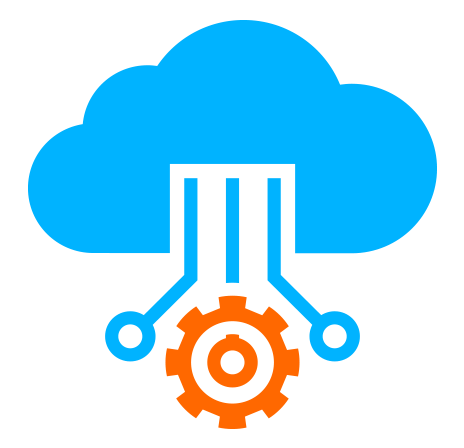 Server
Colocation
Server
Colocation
 CDN
Network
CDN
Network
 Linux Cloud
Hosting
Linux Cloud
Hosting
 VMware Public
Cloud
VMware Public
Cloud
 Multi-Cloud
Hosting
Multi-Cloud
Hosting
 Cloud
Server Hosting
Cloud
Server Hosting
 Kubernetes
Kubernetes
 API Gateway
API Gateway

Let’s face it—AI is no longer a buzzword. It’s in our phones, search engines, e-commerce platforms, healthcare systems, and even the way we manage workflows. But here’s the twist: The AI algorithms themselves aren’t the only stars of the show anymore. The infrastructure that supports AI—especially AI vector databases—has become just as important.
In fact, according to a 2024 McKinsey AI Index Report, nearly 70% of companies deploying AI at scale rely on vector databases to power semantic search, retrieval-augmented generation (RAG), recommendation systems, and more. Why? Because vector databases do what traditional databases can’t—they understand meaning, not just keywords.
And with modern AI models generating massive volumes of high-dimensional embeddings, choosing the right AI vector database is no longer optional. It’s crucial. Especially if you're hosting your models and workloads on cloud infrastructure like Cyfuture Cloud, where performance, latency, and scalability must align with your goals.
So how do you choose the best vector database for your AI project? In this knowledge-based blog, we’ll break it all down—no fluff, no jargon. Just the insights you need to make a smart, scalable decision.
Let’s recap: an AI vector database is a system built to store and search through vector embeddings—which are dense numerical representations of data like text, images, and audio, generated by AI models.
Unlike traditional databases that look for exact matches, vector databases retrieve “similar” content based on how close vectors are to each other in multi-dimensional space. This means they’re essential for:
Semantic search (searching by meaning)
Recommendation systems
RAG-based LLM applications
Multimodal AI (text + image or speech-based models)
Without a proper vector database, your AI model would be like a brilliant mind with no memory or structure. It wouldn’t know what to reference or how to relate.
Choosing a vector database isn't about picking the most popular name. It’s about understanding what your project actually needs. Here’s how to evaluate your options:
This is the first and most important step. Ask yourself:
Are you building a semantic search engine?
Is your project real-time, like a voice assistant or fraud detection engine?
Do you need to retrieve documents to enhance LLM outputs?
Is your application static (limited queries) or dynamic (constantly changing data)?
Your use case will define what features you should prioritize in a database—be it speed, scalability, or ease of integration with your cloud stack.
If you're deploying your solution on Cyfuture Cloud, you’ll want a database that easily plugs into AI inference APIs, GPU-backed servers, and cloud-native workflows.
In AI applications, every millisecond counts. Whether it’s an e-commerce recommendation or a chatbot pulling the right answer, speed matters.
Look for databases that offer:
Approximate Nearest Neighbor (ANN) algorithms like HNSW, IVF, or PQ
Real-time vector search capabilities
Low-latency performance at scale
Platforms like FAISS (Facebook AI Similarity Search) or Milvus are known for high-speed retrieval.
When hosted on Cyfuture Cloud servers, these databases benefit from GPU acceleration, reducing query latency significantly—even with millions of vectors.
Are you storing 10,000 vectors or 10 billion?
Some databases are lightweight (great for small-scale applications), while others are enterprise-grade, built to handle multi-billion-vector workloads across distributed clusters.
For scalable deployment:
Look for horizontal scaling support
Consider sharding and replication
Ensure the cloud infrastructure (like Cyfuture Cloud) supports auto-scaling compute and storage
This becomes critical when your data keeps growing—say, a content platform indexing every new article or a customer service engine indexing chat history.
A database is not an island. It needs to integrate with:
Your embedding model (like BERT, CLIP, SentenceTransformer)
Your inference engine
APIs that connect to your frontend or product
Check if the database supports:
Python, REST, or gRPC APIs
Integration with popular libraries (like Hugging Face or TensorFlow)
Seamless cloud deployment options—Cyfuture Cloud, AWS, Azure, etc.
Containerization (Docker, Kubernetes)
The less friction in integration, the faster you go from prototype to production.
Storing millions (or billions) of 768-dimensional vectors isn’t easy. It’s expensive and computationally heavy.
That’s where indexing strategies come in. Look for:
Compression support (e.g., Product Quantization)
Indexing algorithms optimized for retrieval + space
Lazy loading for large datasets
Using an optimized vector database on Cyfuture Cloud can drastically reduce your storage and I/O costs through smart compression and caching strategies.
Some use cases (like social media feeds or fraud analytics) require constant data updates. You’ll need a vector database that supports:
Fast insertions and deletions
Re-indexing on the fly
Real-time upsert operations
Databases like Qdrant and Weaviate are known for supporting dynamic workloads, whereas some older options like FAISS may need full re-indexing (which slows down pipelines).
If you’re dealing with user data, you cannot ignore security. Ensure your vector database supports:
Data encryption (at rest and in transit)
Access controls / role-based permissions
Audit logs
Compliance with GDPR, HIPAA, or regional laws
When hosted on Cyfuture Cloud, your AI vector database benefits from enterprise-grade security, 24/7 monitoring, and localized data hosting—ideal for businesses with sensitive data.
Here’s a quick comparison of top vector databases you can evaluate for cloud deployment:
|
Database |
Best For |
Scalability |
Dynamic Updates |
Cloud Friendly |
|
FAISS |
Small-scale, R&D |
❌ (static) |
❌ |
✅ (manual setup) |
|
Milvus |
High-scale search |
✅ |
✅ |
✅ (via Docker/K8s) |
|
Pinecone |
Fully-managed, production |
✅ |
✅ |
✅ (SaaS native) |
|
Weaviate |
Semantic search + metadata |
✅ |
✅ |
✅ (Open source + SaaS) |
|
Qdrant |
Real-time indexing |
✅ |
✅ |
✅ (Docker, SaaS) |
Cyfuture Cloud supports containerized deployment and orchestration, making it easy to spin up any of these databases on GPU-backed servers with cloud-native configurations.
Choosing the right AI vector database isn’t just a technical decision—it’s a strategic one. It defines how quickly your AI product can scale, how relevant your outputs are, and how fast your system can respond in real-time.
Whether you're powering a semantic search bar, building a smart assistant, or running a RAG pipeline, the right vector database paired with the right cloud infrastructure like Cyfuture Cloud can be a game-changer.
From lightning-fast GPU inference servers to flexible deployments, Cyfuture Cloud provides the ecosystem you need to build, store, and scale your AI projects—securely, affordably, and efficiently.

Let’s talk about the future, and make it happen!
By continuing to use and navigate this website, you are agreeing to the use of cookies.
Find out more


